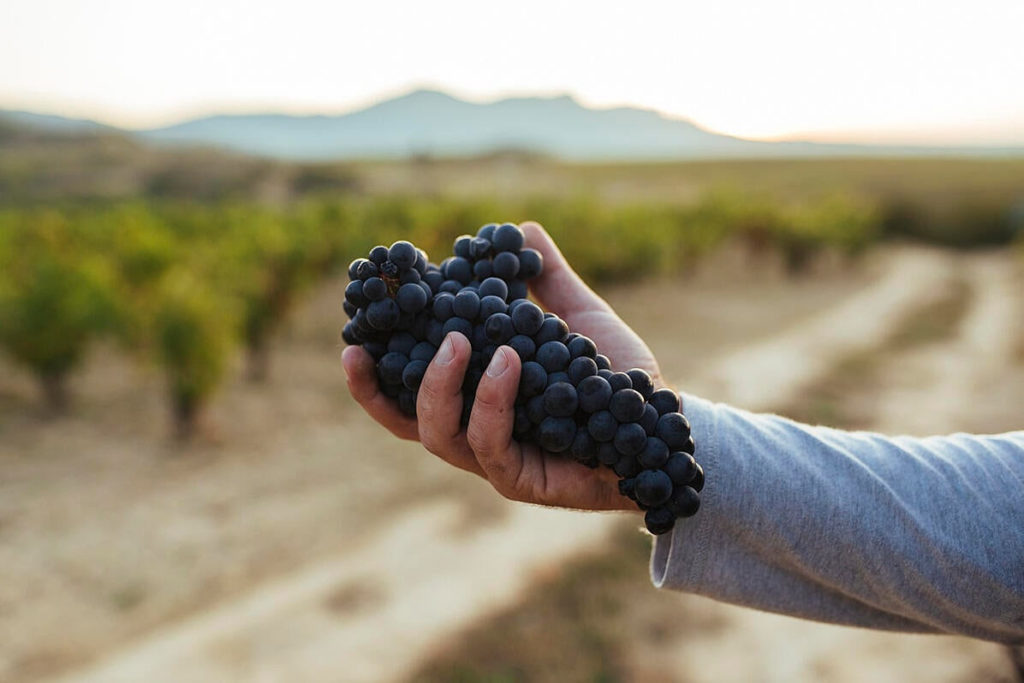Introduction
Climate change is affecting vineyards all over the world. It manifests itself mainly in an increase in temperature that produces grapes with a high alcohol content and high pH (low acidity), both undesirable characteristics in quality wine. The DOCa Rioja believes it is important for typicity, or the recognizable character of Rioja wines, to be preserved in the face of climate change. This belief has led scientists to initially carry out experiments with grape varieties found in Rioja vineyards to determine how they would adapt to a warmer climate. This information will lead to recommendations about planting new varieties in the region.
An article published in GWC Wine Stories in 2023 discussed measures that can be taken by grape growers in Rioja to delay ripening of grapes, which would produce wines with a moderate level of alcohol and avoid the decoupling of phenolic ripeness and sugar content.
The present article, based on academic research published in 2017 in Zubía, the journal of the Institute of Riojan Studies, discusses the results of a series of experiments carried out by scientists at La Rioja’s ICVV (Institute of Grapevine and Wine Sciences) to determine the potential of “minor” red and white grape varieties in the DOCa Rioja to produce wines with high levels of acidity, a key quality factor.
The study was carried out under the premise that even though grapes with a high sugar (potential alcohol) content can produce quality wines, color and acidity can be lower in grapes subject to high temperature during the growth cycle, leading to unbalanced wines that lack texture.
Scientists were especially interested in the ratio of tartaric and malic acids in these varieties because research has shown that high temperatures cause a reduction in acidity, especially of malic acid. Grapes with a high concentration of tartaric acid are less sensitive to the effects of higher temperatures.

The challenge
Twenty minor grape varieties present in Rioja vineyards (excluding Tempranillo) were analyzed (14 red and six white) in 2009-10.
The main analytical parameters measured were:
- Date of the harvest
- Degrees Brix (measurement of potential alcohol)
- pH
- Total acidity (g/l TH2)
- Malic acid (g/l)
- Tartaric acid (g/l)
- Production of a vine (kg)
The different varieties were harvested when the Brix was close to 22º.
To measure the acidity potential of each variety, further calculations were made:
- Tartaric acid divided by the sum of Tartaric+Malic acids
- Total acidity divided by pH
- (Total acidity +Tartaric+Malic) divided by pH.
Of the fourteen minor red varieties, those with the highest acidity potential were Garnacha Roya, Alicante Bouschet, Trepat, Morate and Agawan.
Of the six white varieties, those with the highest acidity potential were Maturana Blanca, Garnacha Blanca and Tempranillo Blanco.
It is interesting to note that the three white varieties with the highest potential were newly approved official Rioja varieties in 2007. None of the red varieties with high acidity potential are currently approved for planting in Rioja. This is no doubt due to the wide acceptance among grape growers and wineries of the five varieties officially approved for planting (Tempranillo, Garnacha Tinta, Graciano, Mazuelo and Maturana Tinta).
Nonetheless, the research was groundbreaking as a valid method for identifying grape varieties with high acidity potential in Rioja.
Further research on a wider scale
Further research along the lines of Rioja’s is a Spain-wide project to measure the adaptability of different varieties, both white and red, following an initiative (VITAdapt) that began in 2009 in Bordeaux. Some of the VitAdapt varieties have currently been planted in Bordeaux on an experimental basis.
Viticultural research related to the effects climate change at La Rioja’s ICVV continues, centering on the study of different clones and rootstocks to measure, among other parameters, early ripening and the capacity to retain water.
As previously mentioned, the object of this research is to provide farmers, wineries, the Rioja Regulatory Board and public administration with a body of information to allow informed, confident decisions to be made to mitigate the effects of climate change in the Rioja DOCa.
The author wishes to thank Dr. Fernando Martínez de Toda, Chair of the Department of Viticulture at the University of La Rioja for his help in researching this article.
Text by Tom Perry, Inside Rioja
Photos: DOCa Rioja Regulatory Council
Learn more about Bilbao-Rioja Great Wine Capitals